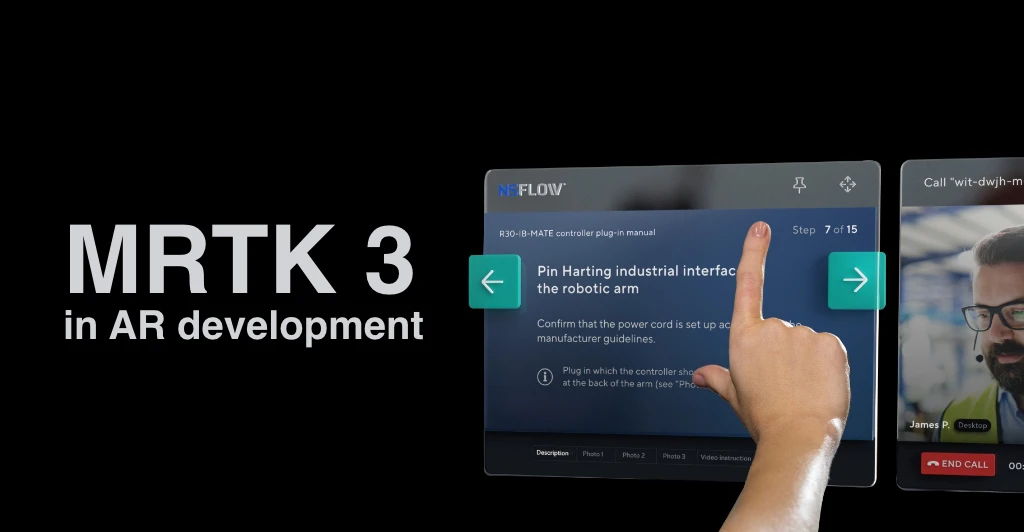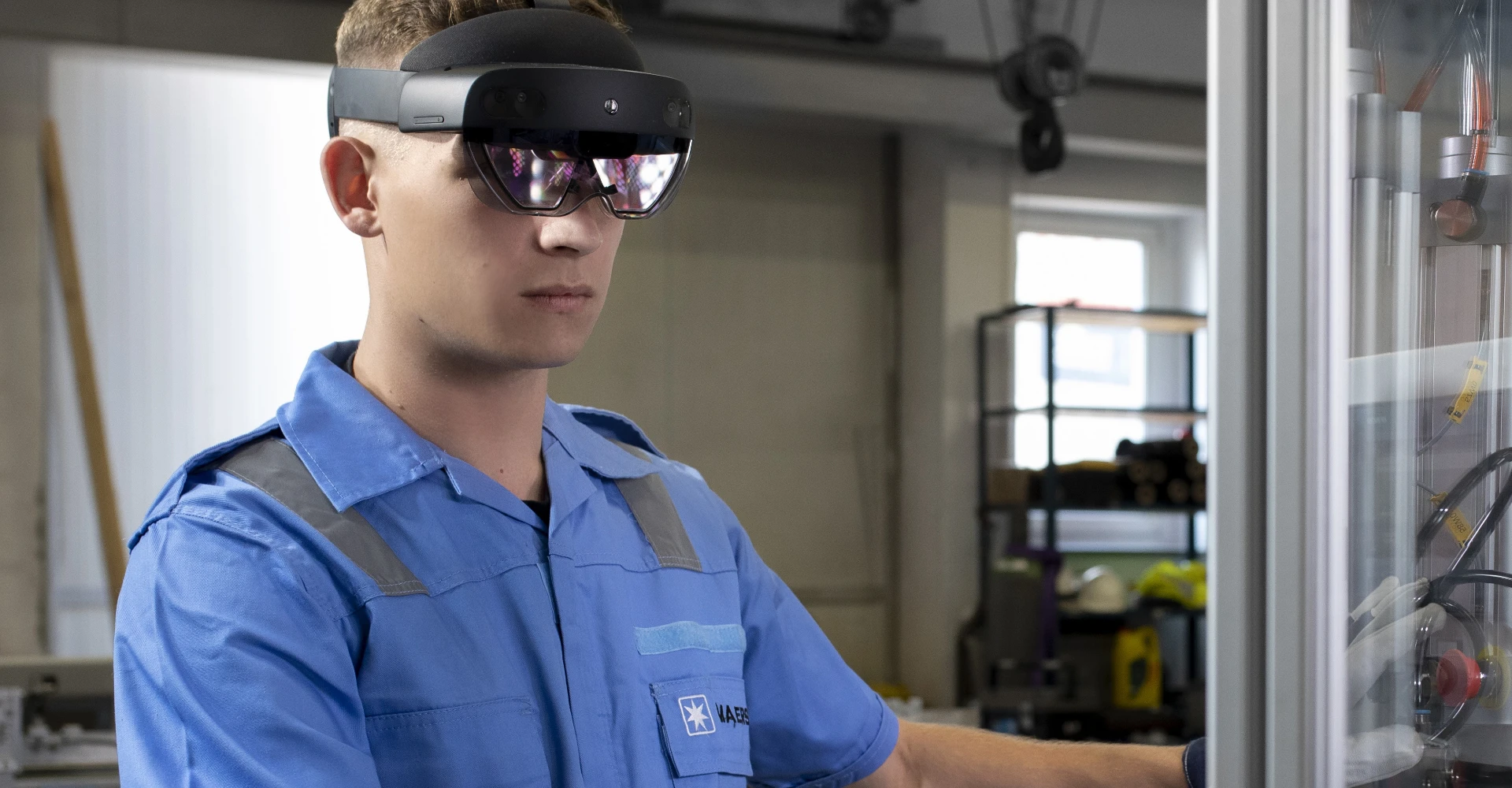
MRTK was primarily created to facilitate work with the first HoloLens, which was – and still is – a disruptive piece of technology. The advanced device enforced new approaches to UX/UI, delivered by the Toolkit. While it was built to complete the Microsoft-originating device, its open-source character attracted developers working on apps for other devices. As the market verified the idea, Microsoft extended the Toolkit to support builds for other platforms and applications.
The future is now, old MRTK
Until now, creating user interfaces on HoloLens based on MRTK 2.0 was rather inflexible. Once a certain view was implemented, it was difficult to iteratively apply changes to it, according to the client’s preferences. The new version of the Toolkit comes with a different approach, allowing dynamic development and easier modification of already existing implementations. The change is vital from the developer’s point of view.
Furthermore, the UI created with MRTK 3 is not only nice-looking but easily scalable. Scalability was one of the pain points of previous versions, holding back app creators in adjusting digital products to growing demand and number of users. Among introduced changes, Microsoft developers delivered cube rounding, which translates into easily scalable slates (individual elements in MRTK). As a result, the newest Toolkit can handle increasing workloads without distortions. What also changed for the better are further works on the moving platform mode. While the market wasn’t enthusiastic about the business decision of targeting the HoloLens2 for the military and corporate users after its launch, the Toolkit already grew on AR developers. Luckily, marketing decisions and business links between entities don’t determine MRTK reception. Thanks to its development, applications on HoloLens2 can be built to work in moving environments, backed by stable holograms.
Supplementing Unity’s XR Management and XR Interaction Toolkit, MRTK3 comes with an array of improvements and new features.
Major changes in comparison to MRTK2:
- Based on Unity XR Interaction Toolkit and the Unity Input System
- Oriented towards resource-constrained platforms like HoloLens 2
- User Interface enhancements
- Flexible interaction paradigms
- New interaction & manipulation models
- Production-grade dynamic auto-layout consisting of Unity Canvas & 3D UX
Further improvements:
- Most features and systems were redesigned for maximum performance
- Mixed Reality Design Language update
- Synchronized data binding for improved UI
- Input assistance

presentation to try
Nsflow in action
What does MRTK 3.0 change for Nsflow?
The initial Nsflow application was first developed when MRTK worked as the dedicated solution for HoloLens1. As for now, we’re rewriting our architecture, creating Nsflow 2.0 to benefit from our augmented reality platform using various devices fully.
Improvements to the Mixed Reality Toolkit brought what was deemed necessary by AR developers. What we consider a major improvement is streamlining work – engineers working on the AR platform don’t need to double their work by adjusting the solution to their needs.
MRTK 3.0 brought an end to repeating work on particular elements of the application to work on various devices. A button programmed to work on HoloLens2 will work as well on Android devices. Components can be created as “one for all”, significantly reducing programming time, and allowing for shorter time-to-market of new functionalities and platform updates.
MRTK allows for better resource allocation and, while it does require being constantly up-to-date with ongoing changes, its advantages are inimitable. To top that, Microsoft provides a whole new experience for those using their creation. In contrast to the traditional approach, developers searching for assistance with MRTK 3 don’t struggle with soulless forms and frameworks. The Toolkit has experts deleted to assist its users, answering their questions and dispelling doubts.
The takeaway
The Mixed Reality Toolkit came a long way from supporting primarily Microsoft-originating devices to growing into an open-source project, appraised by AR developers building apps for various equipment (mixed, virtual, and augmented reality equipment) and platforms (e.g. mobile). Building blocks for common interactions, creating functional UI, and sharing vital components make MRTK 3.0 a convenient tool for Unity-based applications. The Toolkit saves time and money by enabling rapid prototyping, eliminating the need to duplicate created elements, and far-reaching customization.
Are you looking for a Unity-powered AR platform to streamline your industrial processes? See how we put the Toolkit to good use, creating a solution to assist frontline workers. Book your free demo & try out the Nsflow 2 platform first-hand.



















